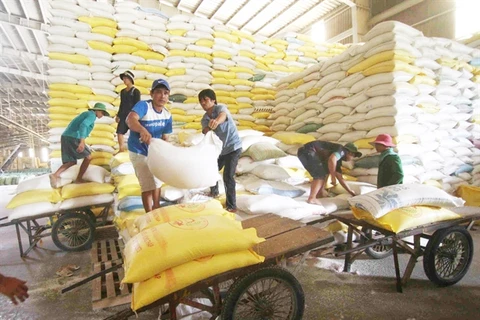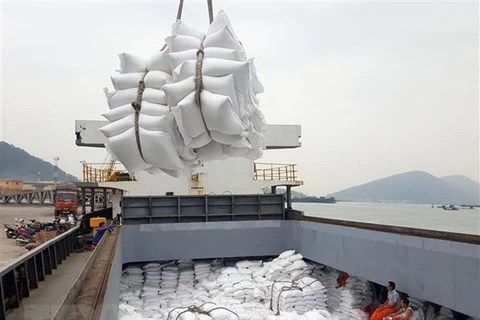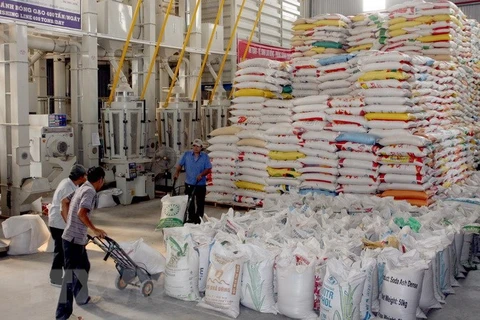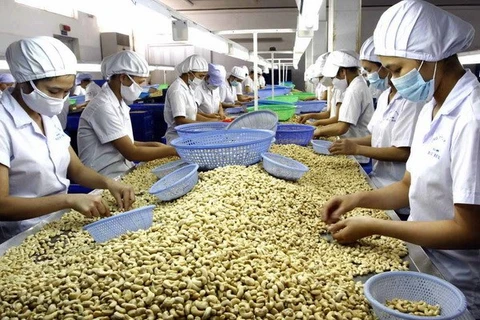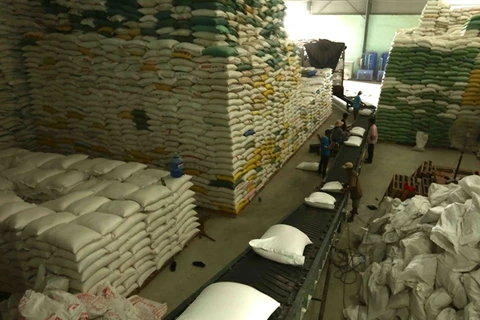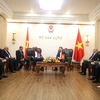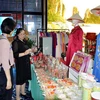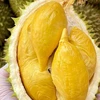Hanoi (VNA) - This year’s rice exports will not only sustain the value growth seen in 2020 but also increase in volume, a leader from major rice exporter - the Trung An Hi-tech Farming JSC - has said.
Vietnam exported 6.15 million tonnes of rice worth 3.07 billion USD in 2020, down 3.5 percent in volume but up 9.3 percent in value year-on-year, according to the Ministry of Agriculture and Rural Development.
Citing reasons for optimism about exports, Trung An’s General Director Pham Thai Binh said the country’s policy of intensive and extensive integration into the world has created a number of competitive edges for Vietnam’s economy via multilateral and bilateral free trade agreements.
Under the integration policy, he noted, the rice sector has gradually restructured itself towards higher quality, rather than primarily focusing on output, and is growing more diverse varieties, with high-grade grains meeting demand among both domestic and foreign consumers.
Vietnam is among the world’s leading rice suppliers. The COVID-19 pandemic, meanwhile, has pushed many countries towards a food crisis as a result of disrupted supply chains, which may not recover in a short period of time.
Demand for Vietnamese rice from many new markets has therefore surged since mid-2020 and is likely to increase even more this year, Binh went on.
Transportation problems, however, have hampered rice exports in recent times, he said, pointing out that the country is facing a serious shortage of empty containers and cargo ships for exports.
One urgent solution is to ensure self-sufficiency in containers and ships, he suggested, and to do that the Government needs to order the maritime sector and logistics firms to take drastic action./.
Vietnam exported 6.15 million tonnes of rice worth 3.07 billion USD in 2020, down 3.5 percent in volume but up 9.3 percent in value year-on-year, according to the Ministry of Agriculture and Rural Development.
Citing reasons for optimism about exports, Trung An’s General Director Pham Thai Binh said the country’s policy of intensive and extensive integration into the world has created a number of competitive edges for Vietnam’s economy via multilateral and bilateral free trade agreements.
Under the integration policy, he noted, the rice sector has gradually restructured itself towards higher quality, rather than primarily focusing on output, and is growing more diverse varieties, with high-grade grains meeting demand among both domestic and foreign consumers.
Vietnam is among the world’s leading rice suppliers. The COVID-19 pandemic, meanwhile, has pushed many countries towards a food crisis as a result of disrupted supply chains, which may not recover in a short period of time.
Demand for Vietnamese rice from many new markets has therefore surged since mid-2020 and is likely to increase even more this year, Binh went on.
Transportation problems, however, have hampered rice exports in recent times, he said, pointing out that the country is facing a serious shortage of empty containers and cargo ships for exports.
One urgent solution is to ensure self-sufficiency in containers and ships, he suggested, and to do that the Government needs to order the maritime sector and logistics firms to take drastic action./.
VNA

